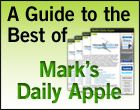Many of you have wondered what it is, what it works, how it works. I hope this will clear some things up for you. Here's little history to start and show how effective it is.
It was invented by a well-known powerlifter by the name of Louie Simmons over 20 years ago. He came up with the idea after having back surgery for an injury. He started his rehab by simply doing leg extension while laying prone in bed. He progressed to letting his leg hang over the edge then extending. He added weights to his ankles after that. Within in no time he returned to a high level of competitive lifting.
Instead of compressing the spine, as in back squats for example, the lower spine is decompressed. In doing so, not only does it strengthen the back but it also stretches the muscles while under tension. Since the spinal column is separating with the trunk flexion, spinal fluid flows more freely to act as a cushion between the vertebrae preventing cord impingement and rehydrating the spinal discs. When you feel that warm, fuzzy feeling in your low back, that is blood rushing to the area. Stagnant blood gets flushed out allowing fresh blood to provide valuable nutrients and oxygen to nourish the muscles. This helps an injured area with the healing process.
Most athletes, including powerlifters, walk around with their pelvis tilted forward and showing extension of the lumbar spine. In order for these individuals to get back to neutral alignment, some type of program is required to address the strengthening of the external obliques, glutes, and hamstrings. The reverse hyper is a great tool for this condition because it produces a stress that causes posterior tilt of the pelvis.
The muscles that are targeted are the upper hamstrings, glutes, and erector muscles (the muscles that run up your back along the length of the spine).
With adequate use, this machine will help you run faster, jump higher, lift heavier weights, rehabilitate an injured back, and improve lower back health.
Now there has been a lot of research done combating the advantages of the reverse hyperextension machine. Some include causing shear force on the vertebrae (the main concern) and the lack of training and knowledge on the proper use of the reverse hyper. If you want to remember one thing it should be this: If your back starts to get sore doing the reverse hyper STOP! But remember there is a difference between joint pain and muscle soreness. The burning or fatigue you experience is your muscle working. A sudden sharp pain is not good. We will evaluate you, decrease the weight, and maybe even prevent you from using the machine any longer.
Now there has been a lot of research done combating the advantages of the reverse hyperextension machine. Some include causing shear force on the vertebrae (the main concern) and the lack of training and knowledge on the proper use of the reverse hyper. If you want to remember one thing it should be this: If your back starts to get sore doing the reverse hyper STOP! But remember there is a difference between joint pain and muscle soreness. The burning or fatigue you experience is your muscle working. A sudden sharp pain is not good. We will evaluate you, decrease the weight, and maybe even prevent you from using the machine any longer.
One more thing... That discomfort you feel on your pelvis or stomach when you are on the reverse hyper is common. The more you do it, the less bruises you will get and you should get more sensitized to the discomfort.
















0 comments:
Post a Comment